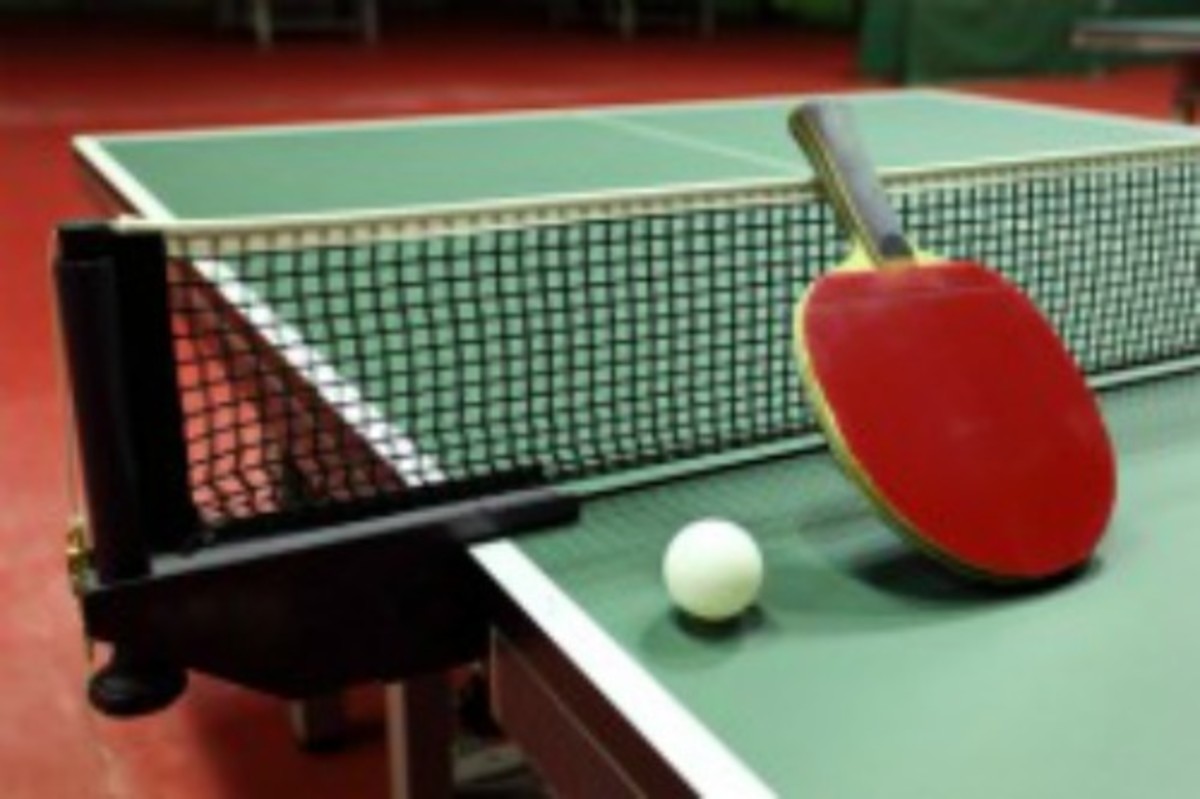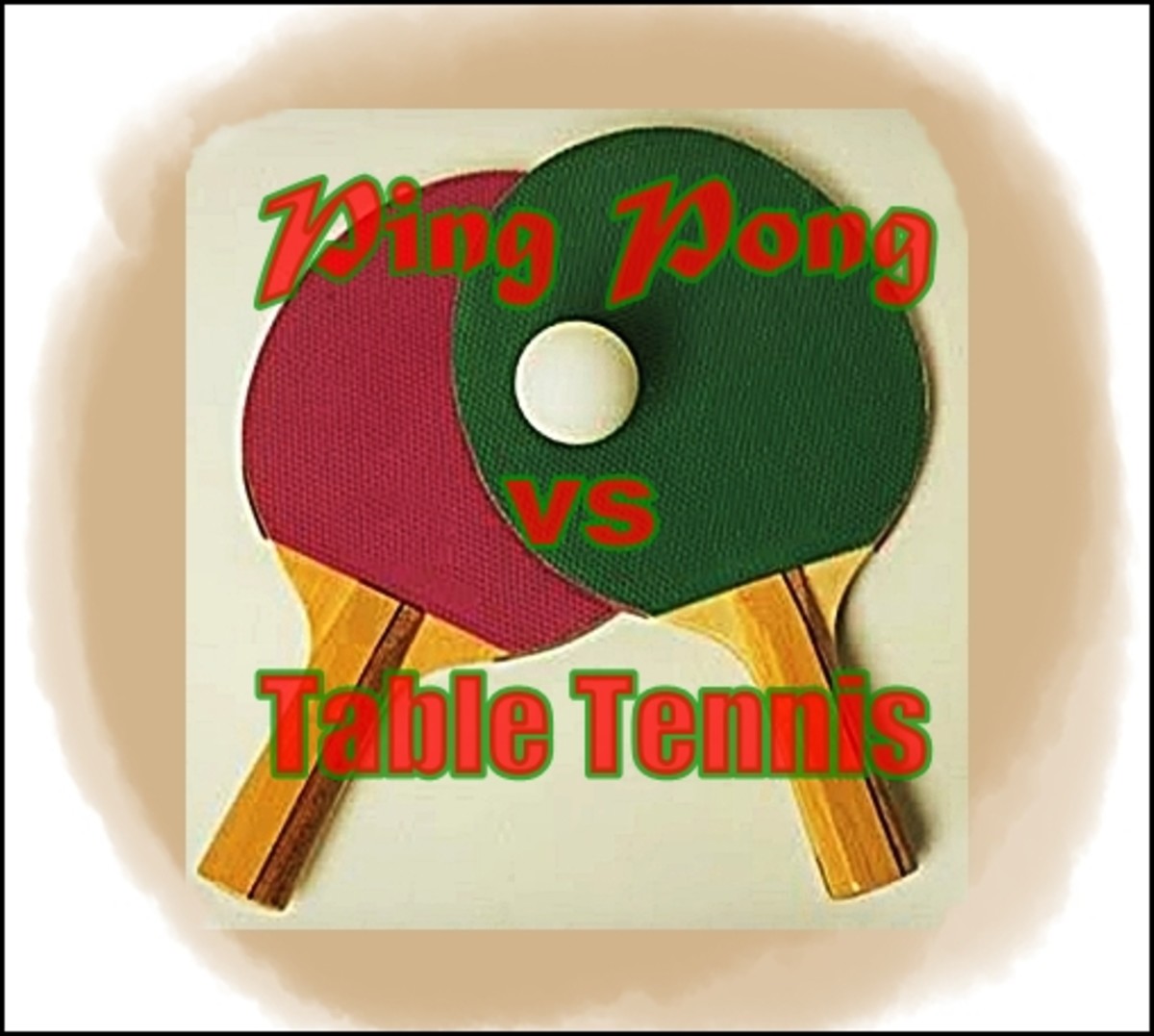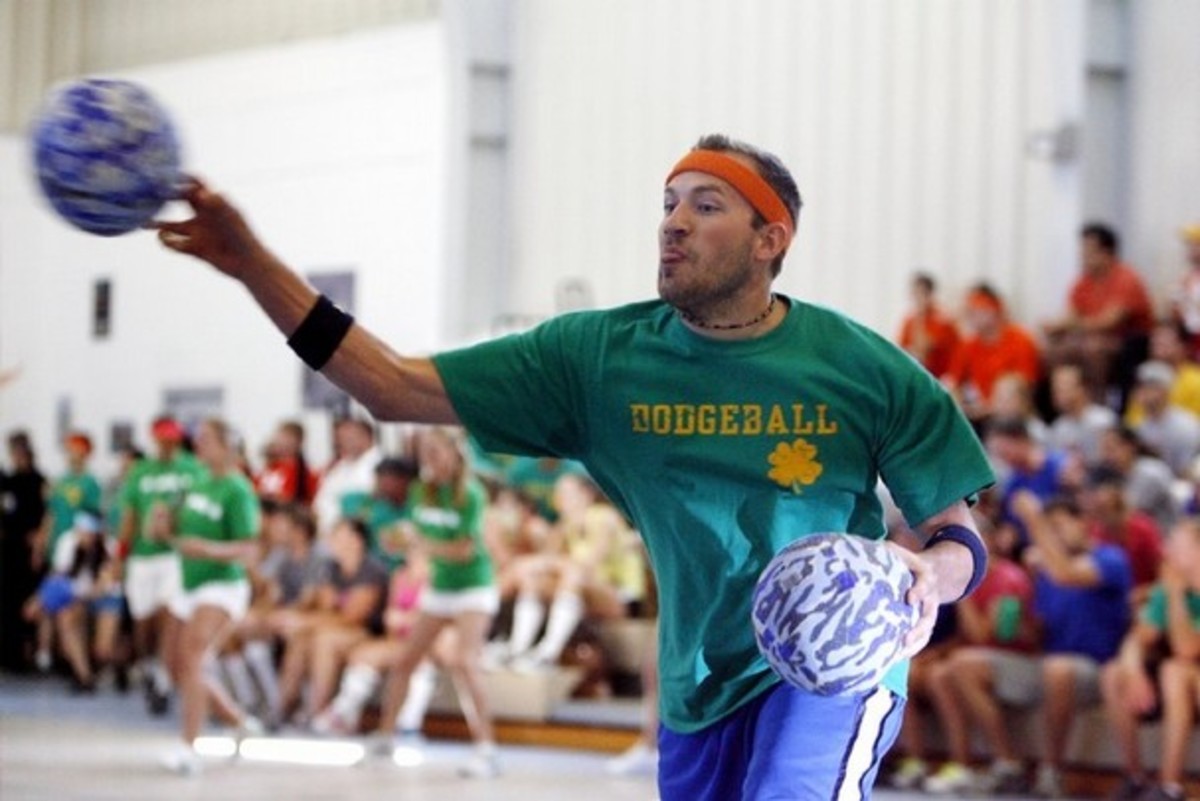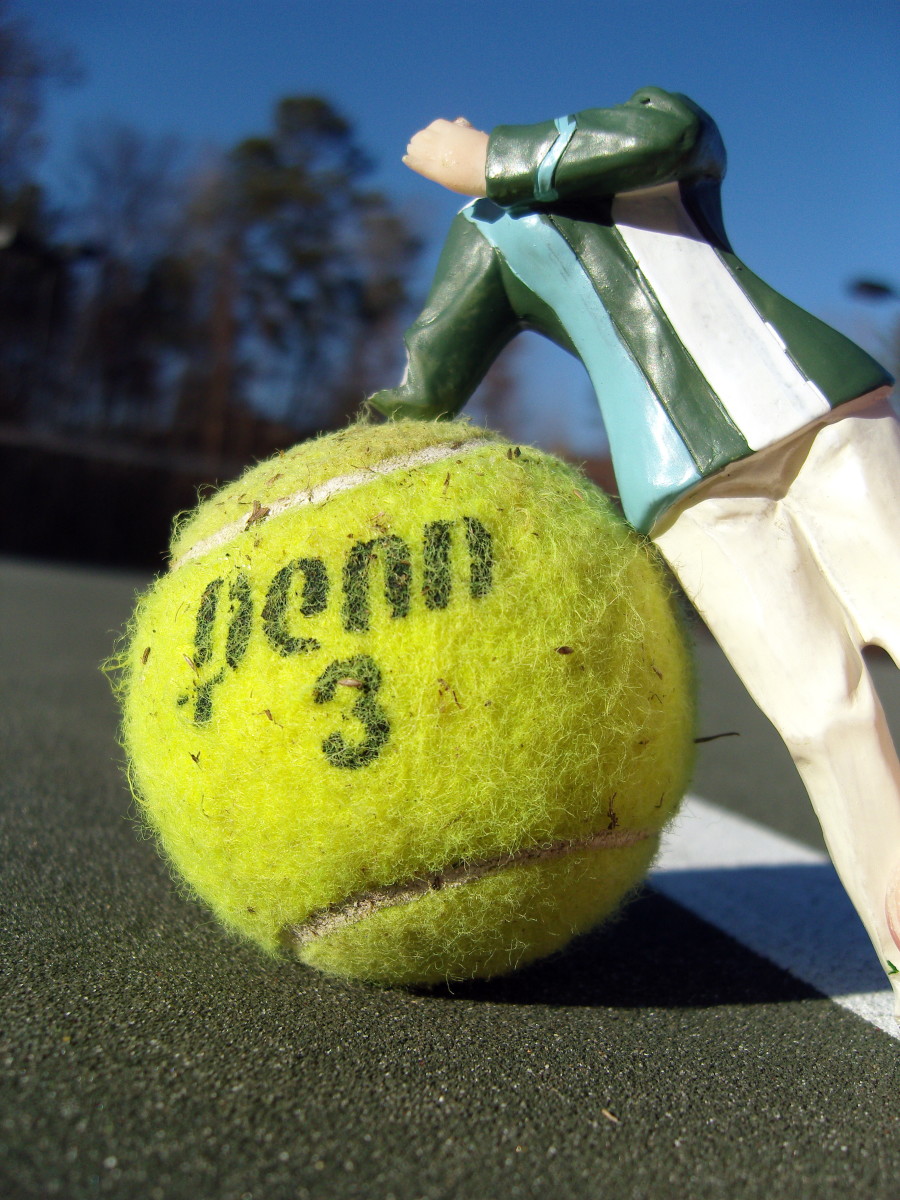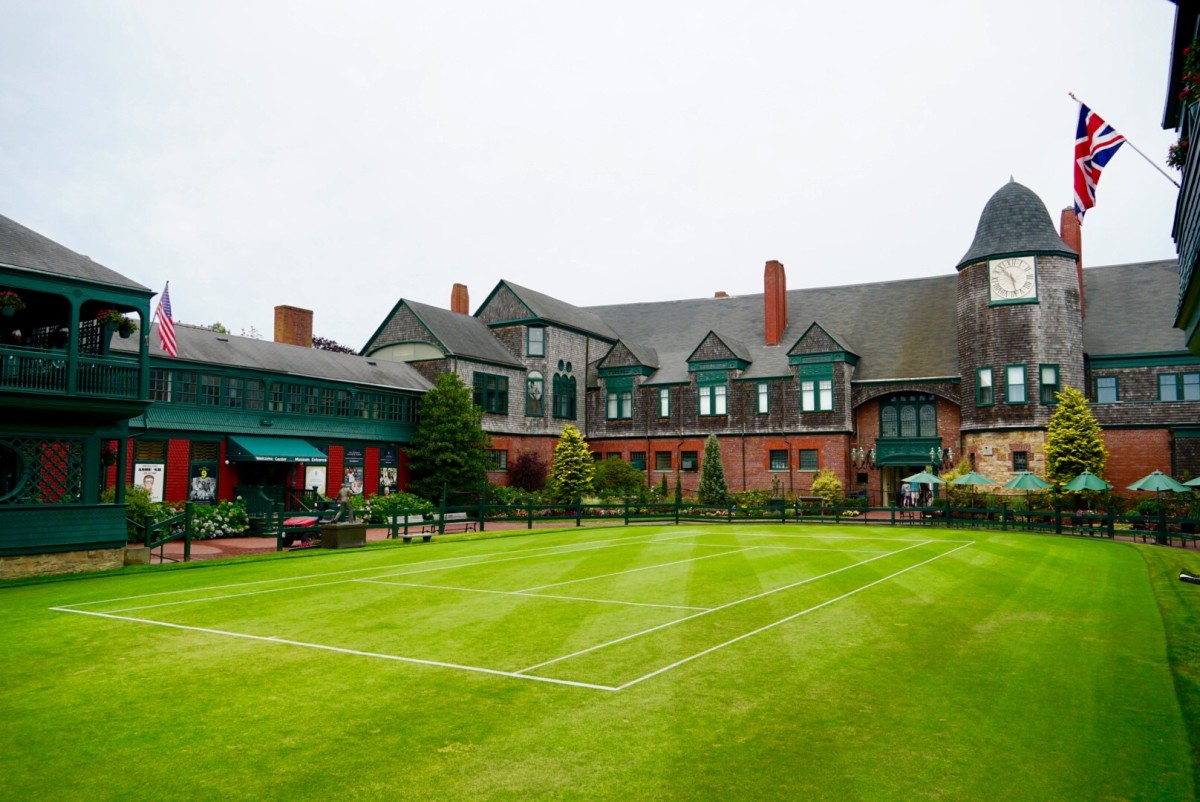Table Tennis, a Fast Paced Sport
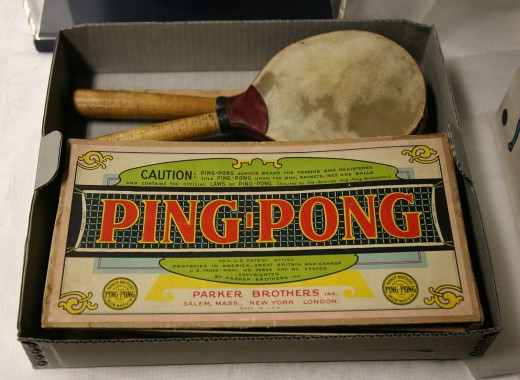
History
Table tennis has no clear or precise origin. It seems that it emerged almost by chance at a tennis club in the UK, during the 1870s, on a rainy day that would not let people play outside, so they created their own kind of “miniature tennis,” using a pool table.
In 1891, James Gibb used a wooden table divided by a net that was attached to small poles and used rubber balls; soon after, Gibb discovered some small celluloid balls while visiting the United States that were perfect to use in the game. James called his game "Gossima", and suggested later on to change the name to "ping pong," a sound made by the ball upon impact on the rackets and table. However, this name was registered as a trademark in the United States, so finally it was called just "table tennis."
In 1901 the first tournaments were held in England and the England Ping Pong Association, which changed its name in 1927 to the England Table Tennis Association, was created. In 1922 this new sport was already known in Sweden, France, Wales, Central Europe and many other countries.
In 1926, in London, the International Table Tennis Federation (ITTF) as established, undertaking the task of organizing the first World Championship, in which Hungary, Austria, England, India, Wales, Czechoslovakia, and Germany participated. The first prize winner was the Hungarian R. Jacobi. Female participation was very low. It only consisted of fourteen players, 11 British, 2 Austrian and one Hungarian.
In 1952, with the arrival of the Japanese to this sport who incorporated new techniques and materials, a new era in the history of table tennis began. Nowadays, China is the country that dominates the world stage, followed by Japan, Hungary, the Czech Republic, the United Kingdom, the Republic of Korea and Sweden.
The International Olympic Committee (IOC) recognized table tennis as an Olympic sport in 1977, although its official debut did not take place until 1988 in Seoul.
In Spain, various competitions are organized by the Royal Spanish Table Tennis Federation.
Most Spanish clubs have introduced Chinese and Asian players; in fact, the best player in the history of table tennis in Spain is He Zhi Wen (popularly baptized as "Juanito"), who was born in China. As for the national team, he ranked twentieth in the world ranking.
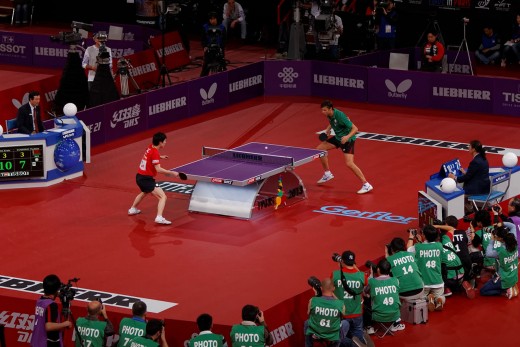
The playing surface
The game table is a rectangular area 9 ft long and five ft. wide, 2.5 ft. high
It can be made of any material, but must meet certain basic features, such as being completely flat, usually dark blue or green colored; and must provide a 9.1-inch bounce when a ball is dropped from a height of 11.8 inches.
The net divides the field widthwise into two equal parts, and must be held by posts at the height of 6 inches.
The playing area is the area around the table reserved for players and referees in the competition. Its dimensions should be 32.8 to 45.9 ft. long, and 16.4 to 22.9 ft. wide.
Players
Table tennis can be played individually or in doubles. Players change sides at the table at the beginning of each game and in the deciding game, when one of them reaches the number ten point.
Usually, table tennis players wear a short-sleeved shirt, shorts or a skirt, socks, and sports shoes.
The competition is presided over by a Referee who directs the tournament and appoints the umpires for each individual game, who is the decision-maker in every match.
Equipment
The ball must be spherical and made of celluloid plastic, yellow or white colored with a matte finish and have a weight of 0.098 oz and a diameter of 1.57 in.
The Racket or paddle can be any size, shape, and weight, but 85% of its mass, at least, should be a single piece of wood; currently racquets are made of carbon fiber layers, glass or compressed paper. As a rule, the grip of the racket is coated with cork to facilitate handling.
One or both sides of the racket will be covered with bright red rubber on one side and black on the other.
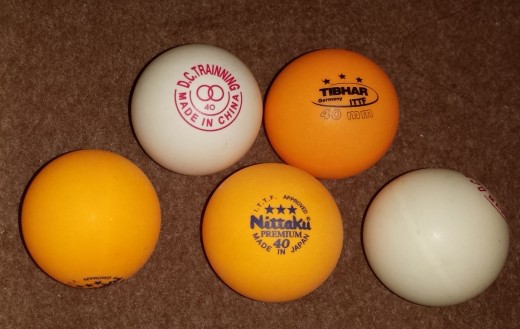
Basic Gameplay
The service
The service is the move you make to put the ball in play, the player who hits first is called the server.
At the start of the service, the ball must be stationary, remaining on the open and extended free palm of the hand of the server, behind the end line and above the level of the playing surface.
Every two points, the receiving player or pair shall become the serving player or pair and so on until the end of the game unless both players or pairs have scored 10 points or the expedite system is operated
Faults
A player shall score a point when his opponent commits any of the following offenses:
Does not place the ball on the opposite side of the table.
Does not return the ball before it hits the ground.
Allows the ball bounce more than once on the game table or hits it twice.
Touches the table with his free hand while the ball is in play or moves the table with some part of his body.
In doubles, hits the ball out of turn.
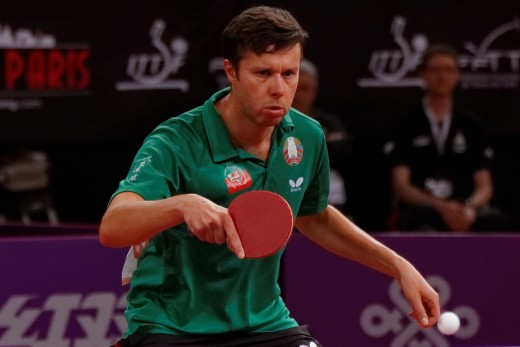
Duration of the match
The player who first scores 11 points is the winner unless both players score 10 points; in this case, the winner is the first player who gets a 2-point difference.
A match is played best of three or five games.
There is no fixed time for the duration of a match of table tennis, so when a game takes longer than 10 minutes, the so-called expedite rule is applied (which can also be requested by both players before the 10 minutes). From the time this rule is applied, each player shall alternate one serve at a time until the game ends.
Paddle handling
In table tennis there are three fundamental ways of wielding the racket:
European or classical: It mostly used in Europe and its main advantage is that you can play both sides of the racket without changing the position of the fingers; you grip the paddle as in tennis, but leaving the index extended on the outer side (backhand), on the edge of the blade.
Chinese: The thumb and forefinger are together on the outer edge without actually being in contact, while on the inside three fingers are together and slightly bent over the sheet.
Japanese: It is very similar to the Chinese, but the index finger and thumb are in contact; on the opposite side, the fingers are more open than in the Chinese grip.
Basic position
The correct basic body position is standing with the knees somewhat flexed and the body weight leaning forward to accelerate and facilitate the movements.
The shifts are very short and, unless the player is far away from the table, the legs are not crossed. The correct distance from the table depends on the tactics used, but in no case should you take a position where you are in contact with the table, except to return a drop shot.
Basic strokes
There are several ways to classify the types of strokes in table tennis. Depending on which side of the body the paddle is when it makes contact with the ball:
Forehand: when you make contact with the ball on the same side you hold the paddle; the right for right - handers and left for lefties.
Backhand: when you have to cross your arm in front of your body to perform the hit. The side of the paddle that contacts the ball is different than in the forehand strike.
Ball Effects
The kind of stroke you use gives the ball different effects. Among these are the following:
Top spin: the ball spins forward towards the opponent. This kind of effect is often used for quick, broad strokes. By returning a ball with a top spin with a flat paddle, the ball will shoot up.
Back spin: in this type of effect the ball rotates backward, the bounce is lower, and the stroke is usually closer to the net. It is a type defensive shot because the ball travels at a slower speed. By returning a ball with a back spin effect on a flat paddle, the ball will move very little and then hit the table.
Side spin: this the most difficult effect to give to the ball and also the most difficult to answer to. This type of side effect happens when the ball rotates to either side so, at the time of the return stroke, the ball will shoot to the opposite side of the effect. This effect is often used while serving.
Even though table tennis seems like a straightforward and easy to practice sport, it requires good accuracy and lots of concentration.

